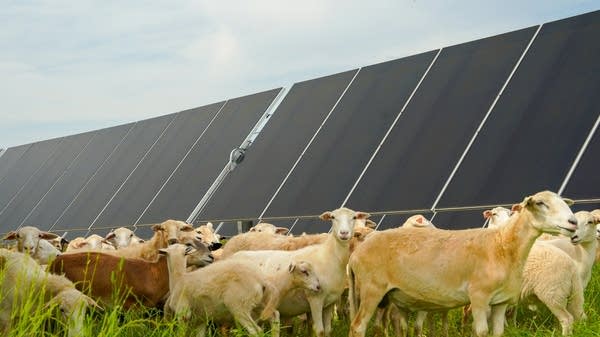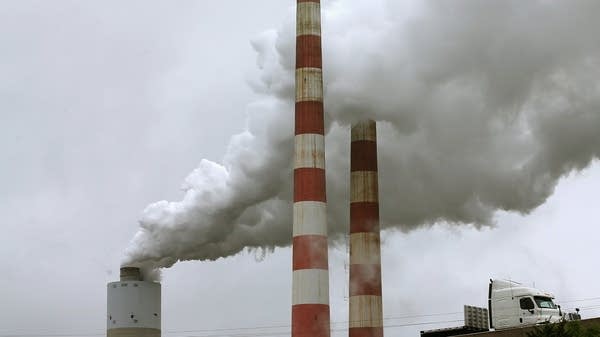Georgia farms mix solar with agriculture
Concerns about farmland loss have sparked opposition to solar, from local advocates to the White House.

On a vast property in southwest Georgia, Tyler Huber raises sheep. Even in the morning, the notorious Georgia sun had already been beating down for hours.
“It is incredibly hot. The sun is just unavoidable, and the fact that they’ve got shade every 15 feet out here — it’s just the ideal environment, to have shade so close,” he said.
The shade comes from solar panels, using that same relentless sunshine to generate energy. The sheep, in turn, have a job to do: They cut down on mowing costs. Huber is the site manager for Silicon Ranch, the solar developer that bought this land from several farmers. He said the flock loves chowing down on the vegetation.
“If we’re able to grow this, which is just a buffet of everything they could ever want, they’re going to happily eat that down,” Huber said.
This land used to have row crops — mostly corn and cotton — and beehives. You can’t grow corn and cotton under solar panels, but this is still farmland for sheep and bees.
Driving through South Georgia these days, this is a common sight — properties where rolling fields of crops have given way to huge solar fields. That makes a lot of people uneasy, here and elsewhere. They worry that solar developers are gobbling up the farmland that their communities and the whole country’s food supply rely on. That’s given rise to a wave of opposition from small local activists all the way to the White House. The Trump administration has said it wants to “disincentivize” solar development on farmland.
But farming and solar energy can often coexist, as they do at the Silicon Ranch site in Lee County, Georgia. Lisa Davis, executive director of the Lee County Chamber of Commerce, said that’s different from what many expect when farmland gets sold or leased to solar companies.
“They envision in their head that you’ve got these big excavators and you just move everything out, and that is so not the case,” she said.
Solar development faced opposition in Lee County from residents and county commissioners worried about losing farmland they rely on and love. But a study found that the financial benefits to taxpayers outweigh the downsides. That’s because farmland gets a tax break in Georgia — farmers pay on just 40% of their land value. But the county can collect the full 100% on land used for solar.
Davis said that can make a huge difference for rural communities.
“They’re never going to get big manufacturers or a lot of big commercial,” she said. “So the opportunity for having a solar project can mean a lot.”
Loss of farmland is still a major concern. The American Farmland Trust estimates that nationwide, 2,000 acres of farmland are lost to nonagricultural uses every day.
But Mallory O’Steen, who leads the Trust’s efforts in the southeast, said solar isn’t the main culprit.
“A lot of what we see in terms of farmland conversion pressure in Georgia is actually due to low-density residential development,” she said.
For many farmers, solar is a way for them to hedge their bets — a reliable way to profit from their land even when weather or disease hits their crops.













